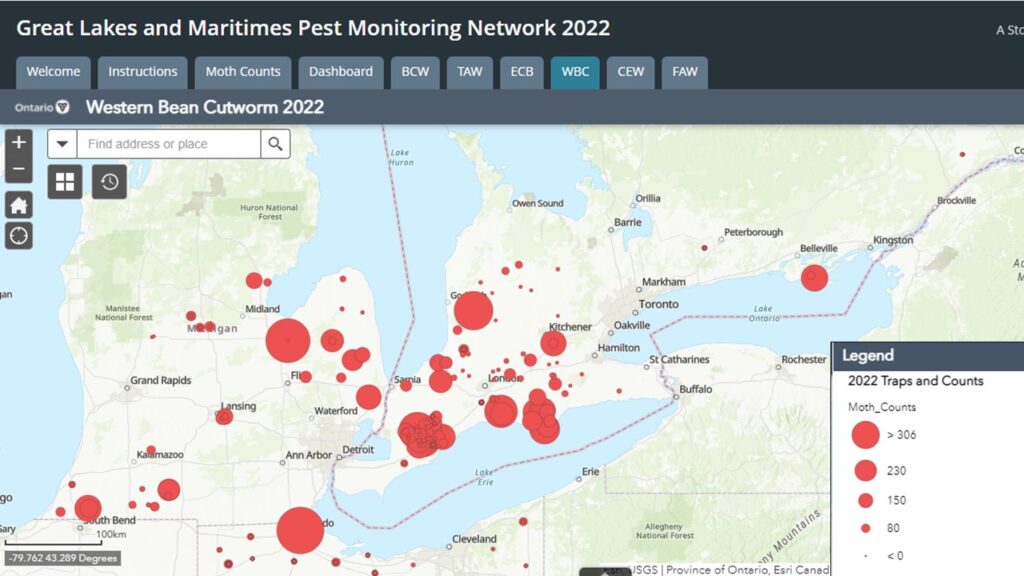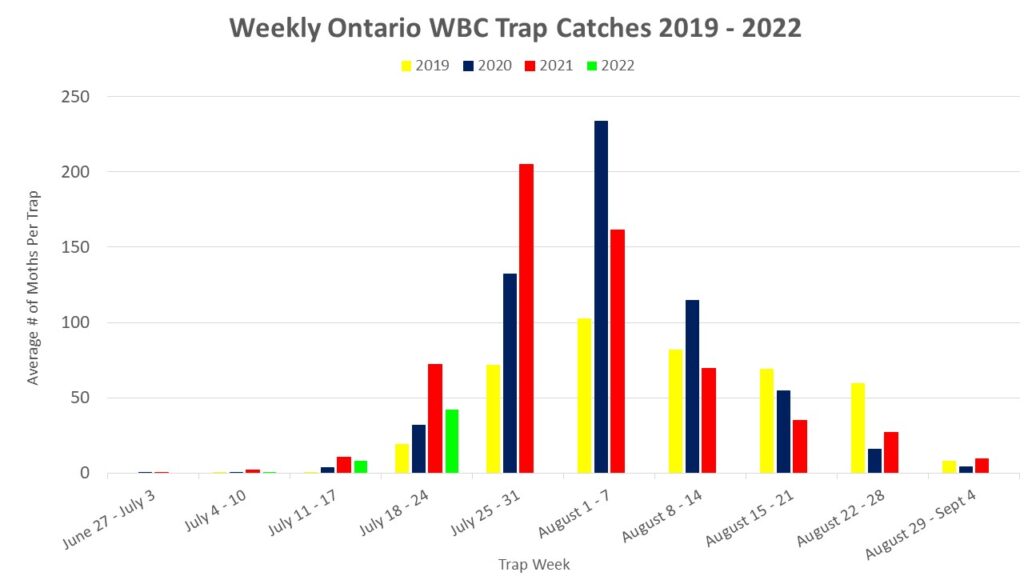Western bean cutworm (WBC) trap counts are starting to ramp up quickly, with a few traps catching around 200-300 moths this week. Fewer trap sites are reporting to the GLMPMN, but from the ones that are, moth activity is increasing in southern counties (Chatham-Kent to Haldimand-Norfolk to Huron, as well as Prince Edward County (Fig. 1).

Current moth captures and growing degree days are tracking to be somewhere between what we experienced in 2021 and 2020. We are working to validate growing degree day models to predict peak flight. Using the Hanson et al. 2015 model that predicts peak flight once 1502 DDbase3.3 is reached, some of the most southern counties in Ontario will see peak flight mid to late next week (June 25th) while the rest of the province won’t reach peak until around August 5th (Fig. 2). Our trap captures are also aligning somewhere between the last two years (Fig. 3).


What does this all mean? Start scouting for egg masses in corn, if you haven’t already. Start with the earliest planted fields that are close to or in tassel or later. Some fields in Norfolk already reached threshold earlier this week. If during two to three scouting trips you find a running total of 5% of the plants with egg masses or small larvae, control is warranted. Recently published research by Dr Jasmine Farhan et al at the University of Guelph Ridgetown Campus found that Coragen, Matador and Delegate provide 10 to 14 days of residual control of young larvae, while Intrepid provides less than 7 days residual. However, if applications were done 7 days before threshold was reached, all insecticides tested resulted in larval survival. So timing is key. Optimally timing applications for once threshold is reached, shortly after peak flight using products with longer residual will protect the plants during the early R stages and when most eggs and young larvae are present. Information on products registered for western bean cutworm can be found at the Ontario Crop Protection Hub. As always, rotate your chemistries so we don’t see WBC resistance develop to foliar insecticides.
WBC recommendations for dry beans will come later this week.
One thought on “WBC Trap Catches Increasing But Not Peaking Yet – Scout for Egg Masses”
Comments are closed.